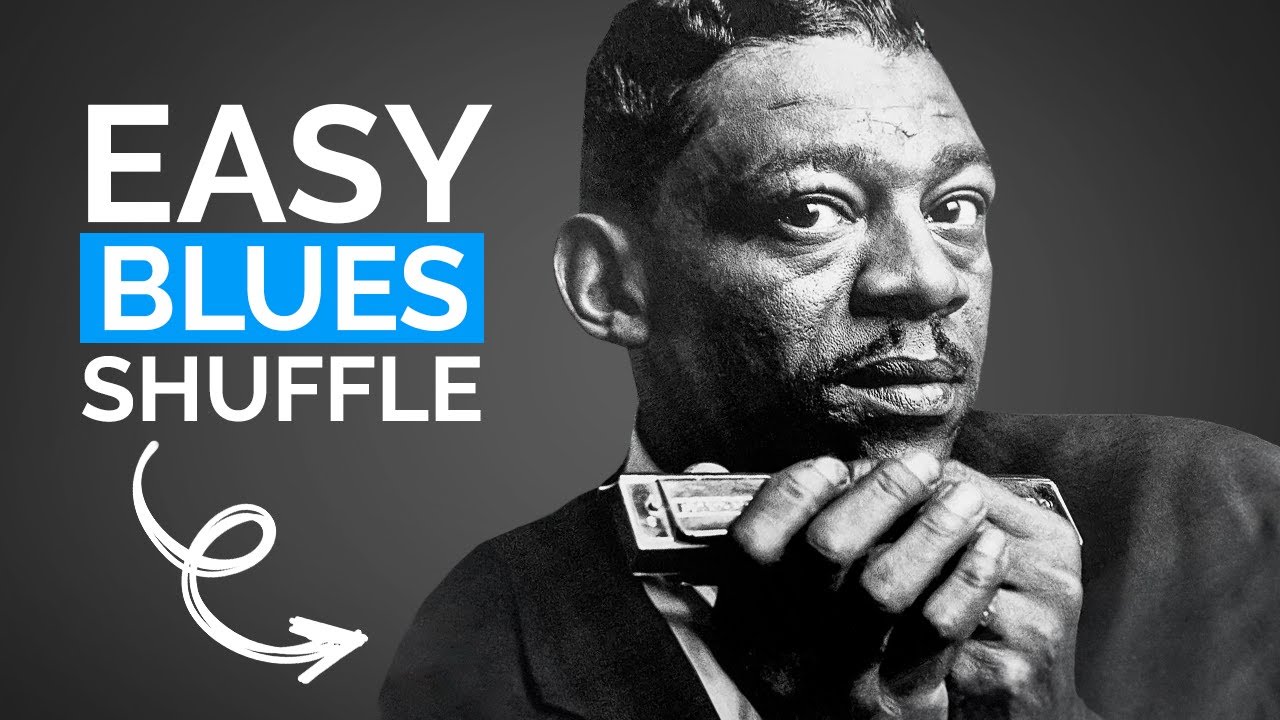Bluesy Shuffle Groove (in 8 Levels)
Wanna learn a legit tongue-blocking blues groove? Whether you’ve never heard of tongue-blocking, or you’re a tongue-blocking fanatic I’ve got something for everyone in this vid.
The tension between harmonica tongue-blockers vs. lip-blockers
reminds me of the tension between Mac vs PC users.
Everyone has their own legitimate preference,
but the former always
condescends
to the latter!
![]()
First of all, let me tell you a fact about LEARNING HOW TO PLAY SINGLE NOTES:
![]() FOR MOST PEOPLE: lipping comes easier and faster (lipping is simply drawing the corners of the mouth close together to isolate a note)
FOR MOST PEOPLE: lipping comes easier and faster (lipping is simply drawing the corners of the mouth close together to isolate a note)
![]() FOR .1% OF PEOPLE: tonguing comes easier than lipping (tonguing is playing out of the right corner of your mouth, using your tongue to block the notes to the left of the note being played)
FOR .1% OF PEOPLE: tonguing comes easier than lipping (tonguing is playing out of the right corner of your mouth, using your tongue to block the notes to the left of the note being played)
This was my own personal experience, and that of my friends, but I’ve also seen it corroborated countless times. Having taught thousands of people, only a handful have found it easier to learn how to isolate notes using tongue blocking.
Yet vocal tongue-blocking advocates in deep dark corners of the internet chastise lippers saying “you’re not a REAL harmonica player if you don’t tongue-block!”
The truth is that there are great harmonica players who are primarily lip-blockers, and great players who are tongue-blockers:
Primarily Lip-Blockers
![]() Lee Oskar
Lee Oskar
![]() Buddy Green
Buddy Green
![]() Charlie McCoy
Charlie McCoy
![]() Terry McMillan
Terry McMillan
![]() Howard Levy
Howard Levy
![]() Todd Parrott
Todd Parrott
![]() Adam Gussow
Adam Gussow
Primarily Tongue-Blockers
![]() Big Walter Horton
Big Walter Horton
![]() Sonny Boy Willamson I
Sonny Boy Willamson I
![]() Sonny Boy Williamson II
Sonny Boy Williamson II
![]() Little Walter
Little Walter
![]() Deford Bailey
Deford Bailey
![]() Rod Piazza
Rod Piazza
![]() Joe Filisko
Joe Filisko
These aren’t exhaustive lists, but should be enough players to illustrate that either technique can yield wonderful results.
In fact, here are some of the unique strengths of each technique:
LIPPING ![]()
![]() Enables use of articulations (like TaKaTa, Doo, Yuh, DeeDee)
Enables use of articulations (like TaKaTa, Doo, Yuh, DeeDee)
![]() Easier to play bends more quickly with more precision
Easier to play bends more quickly with more precision
![]() Easier to play fast runs, especially in higher register
Easier to play fast runs, especially in higher register
![]() Faster to learn how to isolate notes
Faster to learn how to isolate notes
![]() Easier to learn how to bend
Easier to learn how to bend
TONGUING ![]()
![]() Enables regular chordal vamping for accompaniment (self or other)
Enables regular chordal vamping for accompaniment (self or other)
![]() In my experience it’s easier to control volume of “dirty” notes
In my experience it’s easier to control volume of “dirty” notes
![]() Enables playing non-adjacent notes simultaneously, “Splits”
Enables playing non-adjacent notes simultaneously, “Splits”
![]() Easier to make big jumps using tongue switching
Easier to make big jumps using tongue switching
![]() Enables chordal vamping techniques:
Enables chordal vamping techniques:
![]() Slaps
Slaps
![]() Shimmers
Shimmers
![]() Flutters
Flutters
By the way, I give an introduction to all of those techniques ![]() in my Beginner to Boss course.
in my Beginner to Boss course.
I’ve got plenty of gigs and studio sessions as a harmonica player who’s primarily a lip blocker for 28 years.
Then 4 years ago, I started learning tongue-blocking and it has opened up another WHOLE WORLD of harmonica playing for me. (Like the killer groove I teach in this vid.)
The reality is that now I love BOTH techniques. ![]() +:tongue:
+:tongue:
Tongue-blocking is really fun for playing rhythm stuff behind other people. I am a guitar player, and I like the feeling of playing rhythmic chordal grooves behind singers or soloists, and tongue-blocking provides me, as a harmonica player, with a similar feel and sonic palette.
Tongue-blocking is also really fun for truly playing solo with no jam track or backing band because you can emulate a bass line with chordal accompaniment, as I show in this vid.
**But peer pressure sucks.**![]() So don’t be swayed by vitriolic haters on the world wide web!
So don’t be swayed by vitriolic haters on the world wide web!
If you’re a beginner who’s just learning lip blocking and you don’t wanna be overwhelmed, then you can skip this video right now. You can always come back and check it out later, when it sounds fun!
The more techniques you learn, the more colors on your palette to choose from in order to fully express yourself on your instrument. ![]()
ALWAYS DO what INSPIRES you MOST. Period.
![]() There’s the key.
There’s the key. ![]()
![]()
![]()
